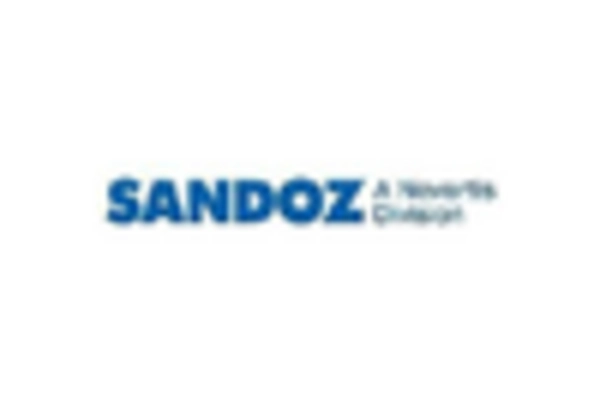Advancements in Biotechnology
The growth hormone-deficiency market is significantly influenced by advancements in biotechnology, particularly in the development of recombinant growth hormone therapies. These innovative treatments have shown improved efficacy and safety profiles compared to traditional therapies. In Japan, the market for recombinant growth hormone is projected to reach approximately $500 million by 2026, reflecting a compound annual growth rate (CAGR) of around 8%. The introduction of biosimilars is also expected to enhance competition and accessibility, potentially lowering treatment costs. As biotechnology continues to evolve, the growth hormone-deficiency market is likely to benefit from novel therapeutic options that cater to diverse patient needs, thereby expanding the overall market landscape.
Rising Healthcare Expenditure
Japan's healthcare expenditure has been on an upward trajectory, which positively impacts the growth hormone-deficiency market. The government allocated approximately ¥42 trillion ($380 billion) for healthcare in 2025, representing a 5% increase from the previous year. This increase in funding is likely to enhance access to healthcare services, including specialized treatments for growth hormone deficiency. As healthcare providers receive more resources, they can invest in advanced diagnostic tools and treatment options, ultimately benefiting patients. Moreover, the rising trend of personalized medicine may lead to tailored therapies for individuals with growth hormone deficiency, further driving market growth. This financial commitment from the government indicates a supportive environment for the growth hormone-deficiency market.
Emerging Telemedicine Solutions
the growth hormone-deficiency market is positively influenced by the emergence of telemedicine solutions in Japan.. As healthcare systems adapt to technological advancements, telemedicine offers a convenient platform for patients to consult with specialists without the need for in-person visits. This is particularly beneficial for individuals in remote areas who may have limited access to endocrinologists. The integration of telehealth services is likely to enhance patient engagement and adherence to treatment plans, ultimately improving health outcomes. As telemedicine continues to gain traction, it may facilitate earlier diagnosis and ongoing management of growth hormone deficiency, thereby driving growth in the market.
Increased Focus on Pediatric Endocrinology
the growth hormone-deficiency market is seeing an increased focus on pediatric endocrinology in Japan.. With the establishment of specialized clinics and training programs for healthcare professionals, there is a concerted effort to improve the diagnosis and management of growth disorders in children. This emphasis on pediatric care is likely to lead to earlier detection of growth hormone deficiency, resulting in timely interventions. As awareness grows among parents and caregivers, the demand for pediatric endocrinology services is expected to rise. Consequently, this trend may contribute to the expansion of the growth hormone-deficiency market, as more children receive appropriate treatment and support for their growth-related issues.
Increasing Prevalence of Growth Hormone Deficiency
the growth hormone-deficiency market is experiencing a significant rise in prevalence rates in Japan.. Recent studies indicate that approximately 1 in 3,000 children are diagnosed with growth hormone deficiency, leading to a growing patient population. This rise in cases is attributed to enhanced diagnostic capabilities and increased awareness among healthcare professionals. As more individuals are identified, the demand for treatment options is likely to surge, thereby driving market growth. Furthermore, the aging population in Japan, which is projected to reach 36% by 2040, may also contribute to an increase in adult-onset growth hormone deficiency. This demographic shift suggests a potential expansion of the growth hormone-deficiency market, as both pediatric and adult patients seek effective therapies.

















Leave a Comment